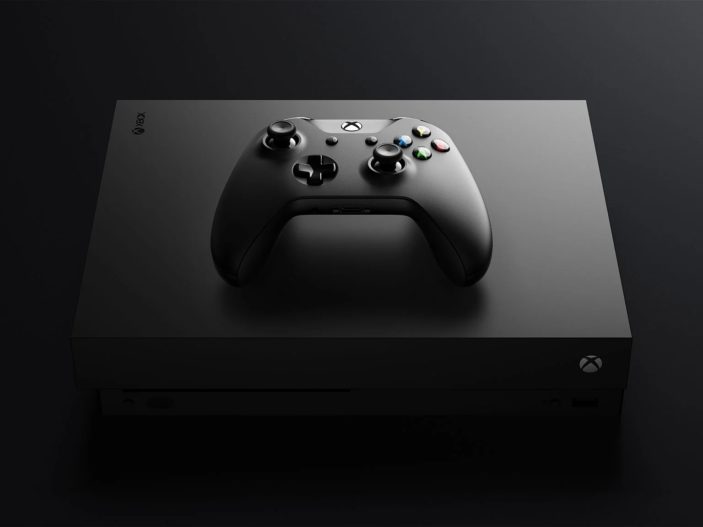
For the last seven years, the Xbox One has been one of the internet’s favourite punching bags.
The machine that Xbox debuted at Microsoft’s Redmond campus ahead of E3 2013 was suffering an identity crisis. It was a video game console that focused on everything BUT video games. Against a resurgent and clear-minded PlayStation, the Xbox One never stood a chance.
The Battle of E3 2013
The Xbox One reveal event was a disaster. It was a misreading of its audience so catastrophic that its consequences reverberate through the industry to this day. It was an event that had the look and feel of vintage, engineer-first Microsoft. Rather than build a machine that catered to its audience’s desires, Microsoft simply would tell them what they wanted. When that audience objected, Microsoft would treat them like they didn’t understand its genius.
It began quite normally. The sizzle reel spotlit well-known game developers and pushed a sense of community. But then, curiously, other faces began to appear. Rooster Teeth’s Barbara Dunkleman said the word “Me” a lot. Film-makers like Steven Spielberg and JJ Abrams appeared, along with Dreamworks CEO Jeffrey Katzenberg. The word “TV” cropped up in the voice-over to a concerning degree.
Video courtesy Gamespot on YouTube
Microsoft’s then President of the Interactive Entertainment Business, Don Mattrick, took the stage. He wore a sleek grey suit and the grin of a man about to unveil a masterpiece. At the time, Mattrick was considered a wunderkind. He was an industry veteran, lauded for his work on the Xbox 360 and the original Kinect. In 2011, Fortune Magazine named him one of their Smartest People In Tech. The following year, CNN Money named him among their Top 10 Brilliant Technology Visionaries.
In the course of a single hour on stage, Mattrick would torch his entire career. He would be the last person to realise the extent of the damage.
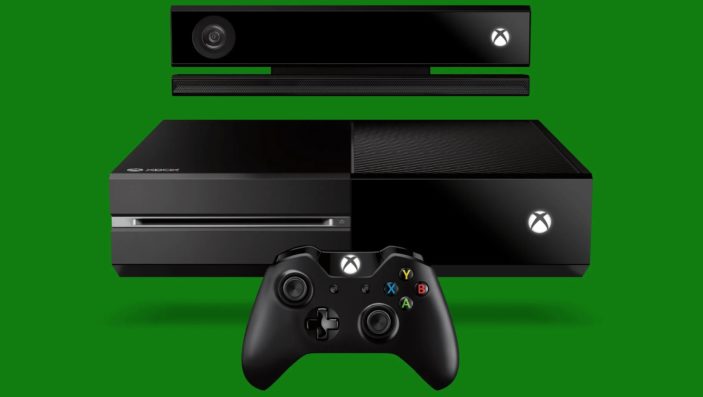
A turn for the worse
At the time of its announcement, the Xbox One could not have been described as a traditional video game console. Rather, Microsoft had built a machine that could become the beating heart of any living room. Movies, TV, music — the Xbox One could do it all. It had its own HBO-style library of pay-per-view media on demand. There was cable TV passthrough and HDMI-IN. You could control it with the power of your voice. It could do a version of picture-in-picture so you could game and watch TV at the same time. It was an all-in-one entertainment solution, hence “Xbox One.”
It’s a name that has come to mean less and less as its life has worn on. At the time, the original Xbox from 2002 was broadly referred to as the “Xbox 1”. The concern was that the name overlap would create confusion between models. When PlayStation’s strategy was to name its machines in numerical order, why complicate things? There was also a lack of progression in the name. “Xbox 360” was clear — a revolution in hardware and performance. To go from Xbox 360 to Xbox One sounded on paper like a downgrade. Then there was the fact that the name seemed like a misnomer; far from doing one thing really well, the Xbox One appeared to be doing six things badly. These would be the first of many complaints to arise out of that day.
The Xbox One could also play video games. I mean, if you wanted it to. After movies, TV, and music, games seemed like a distant fourth among the box features Microsoft wanted to highlight.
Then came the non-negotiables. The Xbox One required an always-on internet connection or it wouldn’t work. The console would be bundled with a Kinect, without which it wouldn’t work. It wouldn’t play used games at all, and games could not be swapped with a friend. Finally, because of Kinect, the price blew out to $500 USD, making it $100 pricier than the PlayStation 4.
The always-on connection allowed the Xbox One to touch base every 24 hours and upload usage data to Microsoft. The used games debacle was considered treasonous among consumers, preventing people from even lending games to their friends. Kinect was perhaps the most insidious and invasive — always on, always watching, always listening. It was thought that, should a user select a movie from the Xbox Film & TV store, Kinect could scan the room, detect how many people were watching, and charge a license fee based on that number. It’s the kind of thinking that plays well in a boardroom. You can imagine them all throwing their caps into the air with delight.
What certainly didn’t help Xbox’s case was the company’s outward indifference to the consumer backlash in the aftermath. Following the event, games media questioned Mattrick personally, leading to a memorable chat with Geoff Keighley for GameTrailers. Mattrick dismissed questions about the always-on connection. “We have a product for people who aren’t able to get some form of connectivity,” he said. “It’s called an Xbox 360.”
Xbox would spend a month after the reveal event flip-flopping on the non-negotiables. Mandatory Kinect integration was walked back. So intense was the online backlash that, on June 19, 2013, Mattrick posted a blog on the Xbox Newswire to assure fans that changes were being made.
Twelve days later, Mattrick quietly departed Microsoft.
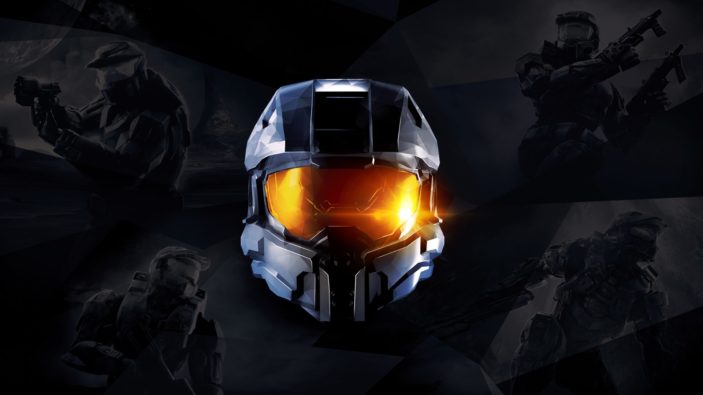
The Long War
The first year of the Xbox One’s life was not much fun. Sony’s PlayStation 4 sprinted away to a huge early sales lead that Microsoft couldn’t hope to match. By late 2014, the sales gap was so wide that Microsoft stopped reporting on Xbox One sales milestones altogether.
Launch exclusives were thin on the ground. Ryse: Son of Rome, a third-person action title about Roman soldiers looked pretty but failed to engage. Dead Rising 3 impressed with its gigantic crowd sizes but was otherwise unremarkable. Zoo Tycoon was so lacklustre that many forgot it existed until an upgraded version released with the Xbox One X.
Forza Motorsport 5 was the top-tier launch pick. It’s a tradition in the games industry to launch with a beautiful racing game, and FM5 ably shouldered the task. But it’s Double Helix and Iron Galaxy Studios’ Killer Instinct reboot that has stood the test of time. A free-to-play fighter, KI was both pretty and had deep fighting mechanics on its side. Though never as popular as Street Fighter or Mortal Kombat, it has nevertheless amassed a small army of dedicated fans. It remains a popular title within the competitive fighting game community to this day.
Things went quiet after that, but there was the odd bright light. Titanfall was an excellent multiplayer shooter, but its lack of single-player content caused its player count to haemorrhage. Forza Horizon 2 arrived in late 2014, and changed the course of the Forza series forever. Sunset Overdrive, a unique and stylish third-person shooter by Insomniac Games came a month later. It was full of great ideas but was never able to win hearts and minds. Halo: The Master Chief Collection arrived only weeks after that and was lambasted at launch for its extremely wonky multiplayer.
2015 fared quite a bit better. Ori and the Blind Forest was a perfect entry-level Metroidvania. Rare Replay Collection was a glossy reminder of the company’s best moments and greatest failures. Gears of War: Ultimate Edition was a clear indicator that the series was safe in The Coalition’s hands. Halo 5: Guardians trod familiar ground, but retained the series’ combat-heavy heart. Forza Motorsport 6 continued the series detail-oriented hot streak. All of that paled to the timed-exclusive Rise of the Tomb Raider. This was a huge get for Xbox, who badly needed a third-party exclusive to hit. It was also one of the first indications that strengthening ties with third-party publishers was on the company’s mind. That line of thinking will be important later.
In 2016, things quietened down again. Remedy’s Quantum Break was a reminder of the console’s abandoned cross-media aspirations. Gears of War 4 gave fans more of the same, but with a brand new cast of characters. Forza Horizon 3 brought the series to Australia for the first time. ReCode showed promise but ultimately failed to impress. Dead Rising 4 was a fun, but forgettable, Christmas time treat.
By 2017, Xbox was moving away from exclusivity as a way to win hearts and minds. Halo Wars 2 and 2018’s excellent Sea of Thieves were the system’s only big exclusives for a long stretch. Beyond that, the focus was now on the reinvention of the hardware and the brand. The ecosystem now took precedence. What you were playing mattered less than where you were playing it.
That change of vision came from a change of leadership.
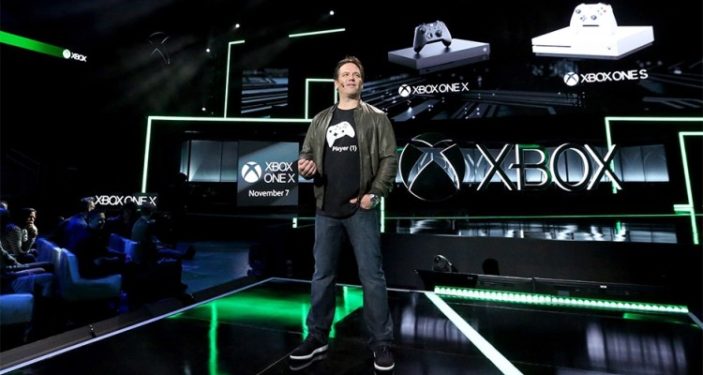
The reign of King Philip the First
It took Microsoft the better part of a year to find Don Mattrick’s successor. In March of 2014, Phil Spencer became the team lead on Xbox, Xbox Live, Xbox Movies & TV, Groove Music and Microsoft Studios game publishing. The sheer number of entities under his leadership gives some insight into how fractured Xbox had become. Spencer’s goal was to get the Xbox One back on track and look to the next generation.
Spencer knew he’d never get the Xbox One into more homes than the PlayStation 4. Sony’s lead was too large; chasing numbers was a fool’s errand. Spencer needed to mend the perception that Microsoft was out of touch with what the games industry wanted. Anywhere Sony was weakest, any niche it left open, Xbox would fill it. He spent years slowly remoulding the company with a single goal in mind. He would make Xbox “the best place to play.”
Compared to CEOS from other gaming corporations, Spencer felt like someone who saw things very differently. He pushed aggressively for the kind functionality and relationships that the industry historically avoids.
Spencer advocated for multiplayer that opened the gates to players on competing platforms. He oversaw Xbox Play Anywhere, letting players jump between Xbox and PC with a single, shared library. He extolled the virtues of backwards compatibility, despite it being a notoriously difficult and costly feature to implement. Spencer broke down industry barriers. He forged a partnership with Nintendo that brought Xbox exclusives Cuphead and Ori and the Blind Forest to the Switch. It brought Xbox IP like Banjo-Kazooie and Minecraft Steve to Super Smash Bros. Ultimate. When Sony balked at Fortnite crossplay, Spencer made sure the world knew Xbox owners could play with anyone they liked.
What was perhaps Spencer’s finest hour came in the form of the Xbox Adaptive Controller. One of Spencer’s favourite catchcries had become “Games are for everyone.” The Adaptive Controller was that very ethos made manifest. It is a controller for disabled players featuring a large D-Pad and two equally large face buttons. With button rebinding options added to the Xbox OS, these face buttons could be bound to any control players liked. A row of ports along the rear allowed it to interface with any homebrew controller for players with disabilities.
For years, garage programmers had worked to create ad hoc controllers for disabled players. Sometimes these controllers worked, and sometimes they didn’t. There was no way to know until you tried to get it running. With the Adaptive Controller, anyone, regardless of their disability, could now play complex games on the Xbox One without hassle. To this day, there is nothing else like it on the market from a first-party hardware maker.
The Adaptive Controller was a reflection of Spencer’s eye for where the Xbox One could more easily compete. Sony’s focus was squarely on games that sold systems and couldn’t be played anywhere else. That approach takes care of three or four games a year, lock stock and barrel. But it doesn’t give much truck to the hundreds of third-party and indie titles launched around them. Spencer’s golden opportunity had revealed itself. If the PS4 was the home of high-quality exclusives, then the Xbox One would be the best place to play everything else.
To better communicate its bold new direction, Spencer oversaw the design of two new Xbox One consoles. The Xbox One S and Xbox One X would make the hardware available to any budget. The One S was an enhanced version of the launch hardware. It supported 4K HDR, excised the hated Kinect, and retired the large, boxy design for something slimmer and smaller. It was the Xbox One X, however, that took E3 2017 by surprise.
News of its arrival had been brewing for months. Both Sony and Microsoft needed to iterate on their existing hardware. Both companies had been looking to create consumer-grade and powerful “prosumer” versions of their hardware to capture different market sectors. Rumours about the spec of Microsoft’s machine began to circulate a year prior. Industry chatter hinted at the existence of a behemoth. Supposedly, Spencer’s team had prototyped a monstrously powerful console they were calling Project Scorpio. Its spec, the rumours suggested, sat beyond the capabilities of even the PS4 Pro. The rumours were given credence during E3 2016 when a short segment on Project Scorpio promised a reveal was forthcoming.
When Spencer took the stage at Los Angeles’ Galen Center in 2017, it was to finally unveil his baby brute. Though the fanfare was significant. Every last scrap of marketing that year was emblazoned with the words “The Most Powerful Console Ever”. With both new Xboxes on the market by November 2017, Spencer was ready for the next stage of the rebuild.

Pass It On
In its infancy, Xbox Game Pass seemed like a direct shot across the bow at PlayStation. Sony’s PlayStation Now was taking a run at a Netflix style subscription service for games. Users paid a monthly subscription and could access a library of games to download and play at any time. The program had been a rare misstep, failing to gain traction due to its high price point and anaemic library. It had been a pilot program, unavailable outside of Japan and the US. PlayStation had wanted it to feel like an exclusive club.
Spencer had once again found his path forward. Xbox would run the same experiment, but it would marry a vast library with a cheap monthly outlay. Game Pass became the scaffold of Spencer’s plan to put third-party at the centre of Xbox’s business model. The strong relationships with third-party publishers and indies that Xbox had fought to preserve gave it a huge advantage.
It’s remarkably simple. A large, evolving library of games of every scale and genre to suit every taste. Download them, play them as much as you want. Get a discount on anything you want to keep before it rotates off the service. Got a PC? No problem, there’s a PC only version of Game Pass available. If you have an Xbox and a PC, you can cover both with a Game Pass Ultimate subscription. Game Pass Ultimate also bundles all the features of the now-defunct Xbox Live Gold program. For this, you can expect to pay $15.95 AUD per month. When you sign up, you’ll get your first month just $1.
It’s been said plenty of times but it bears repeating: Xbox Game Pass is the best deal in video games. There’s no other hardware maker offering a service like this at such a remarkably low monthly buy-in. It’s so consumer-friendly that industry veterans, burned too many times before, wonder what the catch is. Industry commentators and insiders have gone over it and over it. There doesn’t appear to be a catch. It’s just a bloody good deal any way you slice it.
The popularity of Game Pass in the coming generation will inform the shape of the industry. Will the effect of Game Pass in AAA lead to shorter, denser experiences that better fit a subscription model? Will it lead to yet another indie renaissance, helping small devs get their games in front of a huge audience? We look forward to finding out.
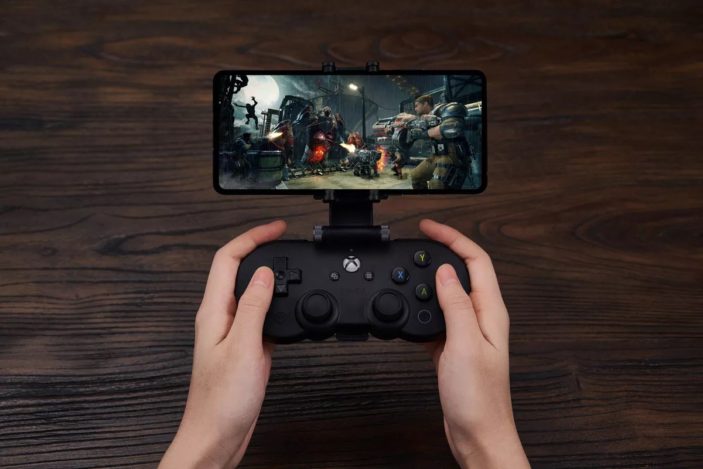
Cloud blaming
The early success of Game Pass gave Xbox reason to look into other ways it could expand its profile. The ongoing legal fracas over xCloud still has the industry’s attention. Playing any game, anywhere, on a PC, console, tablet or smart phone via cloud is ambitious to say the least. For its part, Google seems fine with xCloud despite its ailing Stadia project, a cloud-based gaming service of its own. Google has battled for over a year to get players to take advantage of Stadia with mixed results.
Apple, on the other hand, isn’t thrilled about it. A legal skirmish erupted in August this year when Apple banned the xCloud app for breaching its App Store terms of service. Apple’s problem is that xCloud lets players access games that are not hosted on the iOS App Store. Therefore, Apple doesn’t get a cut of any transactions conducted through xCloud. This gave way to a war with Epic Games that saw Apple ban Fortnite on the same grounds. Xbox has since supported Epic in its attempts to tear down Apple’s walled garden. If Apple can be beaten, or Xbox can find a legal workaround, there may be hope for xCloud after all.

The future is bright
After a generation in exile, Xbox is finally ready to re-enter the video games market. Pre-orders for the Xbox Series X and Series S have sold out in record time. There is an excitement to see the brash American maker loose among entrenched Japanese giants again. Rather than take its cues from Sony, perhaps Microsoft has instead looked to Nintendo as a blueprint for its future? Nintendo plays by no-one’s rules but it’s own. That willingness to be a band apart has ever been a doubled-edged sword.
With the Xbox One, Microsoft tried to go its own way too, but the spirit of the thing wasn’t right. Nintendo can get away with being in many ways contrarian because they always put the end-user, the player, first. With the Series X, it seems Xbox is ready to put players first once again.
So, farewell to the Xbox One. You began life as a swotty know-it-all. The pain of public shaming and long periods of self-reflection altered you for the better. The blockbuster exclusives of the PS4 may have eluded you but, in the end, you became the superior platform. You put in hard, necessary work, took your lumps and never complained. You listened to good faith feedback and remade yourself because you wanted to be better. That’s a complete character arc, and there aren’t many other pieces of tech that have that as a box feature.
Achievement unlocked.
The Xbox Series X releases on November 10, 2020. It retails for AUD $749.95. You can read our full Series X review right here.
